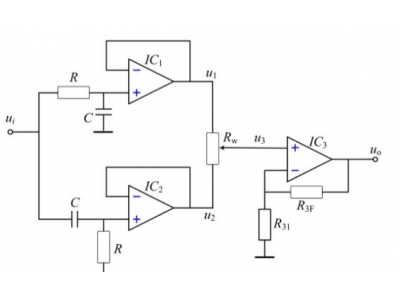jsjw-10电压互感器参数表?
一、jsjw-10电压互感器参数表?
第一个字母:J:电压互感器; 第二个字母:S;三相(D单相) 第三个字母:J:油浸;10:额定电压(kv)
二、电压互感器参数表怎么看准确级?
电压互感器的准确等级又称准确度,是指在规定的一次电压和二次负荷变化范围内,负荷功率因数为额定值( cosφ=0.8)时的电压误差的最大值百分数。 为了提高电压互感器的准确度,要求互感器铁芯的励磁电流要小,一、二次绕组的内阻抗要小。 电压互感器的准确等级通常分为0.2、0.5、1.0、3.0 4个等级。如准确等级为0.5级就表示在额定电压下,在规定的负载范围内,该电压互感器的最大变比误差为0. 5%
三、10KV电压互感器技术参数表?
10千伏电压互感器技术参数包括电压比10:0.1还有准确级0.2或0.5级还有输出容量。
四、石材参数表
石材参数表的重要性及应用
石材作为一种常见的建筑材料,其参数表的编制与应用是非常重要的。石材参数表可以为建筑师、设计师、施工人员等提供关键的信息,以确保建筑的质量和安全性。在本文中,我们将探讨石材参数表的重要性,并探讨其在建筑行业中的应用。
1. 石材参数表的定义与结构
石材参数表是一份包含石材基本特性、物理力学性能以及化学性能等详细信息的文档。它通常由石材供应商或专业机构编制,并在建筑项目中广泛使用。石材参数表的结构通常包括以下内容:
- 石材名称:列出石材的名称、类型和产地等基本信息。
- 物理性能:包括密度、抗压强度、抗弯强度、吸水率等指标。
- 化学性能:列出石材的化学成分以及对酸碱等物质的稳定性。
- 石材颜色:描述石材的颜色、纹理特征以及可能存在的变色情况。
- 施工要求:包括石材的贴面方式、背胶要求、石材保养等相关要求。
2. 石材参数表的重要性
2.1 提供详细的石材信息
石材参数表提供了石材的详细信息,为建筑师和设计师选择合适的石材提供了参考依据。通过石材参数表,他们可以了解每种石材的物理性能、化学性能、颜色特征等,从而根据建筑的需求做出合理的选择。
2.2 确保建筑质量和安全性
石材参数表中的物理力学性能指标可以帮助建筑师和施工人员评估石材的强度和稳定性。根据参数表中的抗压强度、抗弯强度等指标,他们可以合理设计和施工,以确保建筑的质量和安全性。
2.3 保证石材施工的准确性
石材参数表中的施工要求部分可以帮助施工人员正确使用石材,并保证施工的准确性和效率。参数表中列出的贴面方式、背胶要求、石材保养等相关要求,可以避免施工过程中的错误操作,提高工作效率。
3. 石材参数表的应用
3.1 石材选材
石材参数表中的详细信息可以帮助建筑师和设计师进行石材的选择工作。他们可以根据参数表中的物理性能、化学性能、颜色特征等指标,选择与建筑风格和用途相匹配的石材。
3.2 石材施工
石材参数表中的施工要求可以为施工人员提供准确的工作指导。他们可以根据参数表中的要求进行正确的施工,避免石材安装过程中出现的问题,保证施工的质量。
3.3 石材维护
石材参数表中通常也会包含石材的保养方法和注意事项。通过参考参数表中的保养要求,使用者可以掌握正确的石材保养方法,延长石材的使用寿命。
4. 总结
石材参数表对于建筑行业来说是一个重要的工具。它不仅提供了详细的石材信息,帮助建筑师和设计师进行石材选材,还能确保建筑的质量和安全性。在石材施工过程中,参数表中的施工要求部分能够提供正确的施工指导,避免错误操作。此外,石材参数表还包含石材的保养方法和注意事项,帮助使用者延长石材的使用寿命。
因此,对于各类建筑项目而言,编制和应用石材参数表是非常必要的,它能够提供重要的参考和指导,为建筑行业的发展和进步做出贡献。
Translated content: htmlImportance and Application of Stone Parameter Table
As a common construction material, the compilation and application of stone parameter table are highly important. The stone parameter table provides crucial information for architects, designers, and construction personnel to ensure the quality and safety of the building. In this article, we will explore the importance of stone parameter table and its application in the construction industry.
1. Definition and Structure of Stone Parameter Table
The stone parameter table is a document that contains detailed information about the basic characteristics, physical and mechanical properties, as well as chemical properties of stone. It is usually compiled by stone suppliers or professional organizations and widely used in construction projects. The structure of the stone parameter table typically includes the following content:
- Stone Name: Lists the basic information such as the name, type, and origin of the stone.
- Physical Properties: Includes indicators such as density, compressive strength, bending strength, water absorption rate, etc.
- Chemical Properties: Lists the chemical components of the stone and its stability to acids and alkalis.
- Stone Color: Describes the color, texture features, and possible discoloration of the stone.
- Construction Requirements: Includes requirements related to stone veneer, adhesive backing, stone maintenance, etc.
2. Importance of Stone Parameter Table
2.1 Provides Detailed Stone Information
The stone parameter table provides detailed information about the stone, which serves as a reference for architects and designers to select suitable stones. Through the stone parameter table, they can learn about the physical and chemical properties, color characteristics, etc., of each type of stone, and make reasonable choices based on the requirements of the building.
2.2 Ensures Building Quality and Safety
The physical and mechanical performance indicators in the stone parameter table help architects and construction personnel assess the strength and stability of the stone. Based on indicators such as compressive strength and bending strength in the parameter table, they can design and construct rationally to ensure the quality and safety of the building.
2.3 Ensures Accuracy of Stone Construction
The construction requirements section in the stone parameter table helps construction personnel to use the stone correctly and ensure the accuracy and efficiency of the construction. The listed requirements regarding stone veneer, adhesive backing, stone maintenance, etc., can avoid misoperations during the construction process and improve work efficiency.
3. Application of Stone Parameter Table
3.1 Stone Selection
The detailed information in the stone parameter table assists architects and designers in the selection of stones. They can choose stones that match the architectural style and purpose based on the physical and chemical properties, as well as color characteristics indicated in the parameter table.
3.2 Stone Construction
The construction requirements in the stone parameter table provide accurate work guidance for construction personnel. They can follow the requirements in the parameter table to carry out correct construction and avoid problems during stone installation, ensuring the quality of the construction.
3.3 Stone Maintenance
The stone parameter table usually includes stone maintenance methods and precautions. By referring to the maintenance requirements in the parameter table, users can grasp the correct methods of stone maintenance and extend the service life of the stone.
4. Conclusion
The stone parameter table is an essential tool for the construction industry. It not only provides detailed information about the stone to assist architects and designers in stone selection but also ensures the quality and safety of the building. In the stone construction process, the construction requirements section in the parameter table provides correct construction guidance, avoiding errors in operations. Additionally, the stone parameter table includes stone maintenance methods and precautions to help users prolong the service life of the stone.
Therefore, the compilation and application of the stone parameter table are necessary for various construction projects. It provides important references and guidance, contributing to the development and progress of the construction industry.
五、电压互感器可能发展
电压互感器可能发展的趋势
电力系统中的电压互感器在测量电气参数方面发挥着至关重要的作用。随着科技的不断进步和需求的不断增长,电压互感器的发展也变得日益重要。下面将探讨电压互感器可能发展的趋势:
1. 智能化技术的应用
随着智能电网的发展,电压互感器的智能化技术应用将成为未来的发展方向。传统的电压互感器在数据采集、传输和处理方面存在一定的局限性,而智能化技术的应用可以使电压互感器具有更高的精度和稳定性。
2. 多功能化设计
未来的电压互感器可能会拥有更多的功能,不仅仅局限于电压测量。例如,将温度传感器集成到电压互感器中,可以实现对电气设备温度和电压的同时监测,提高电力系统的安全性和可靠性。
3. 新材料的应用
随着新材料技术的飞速发展,未来的电压互感器可能会采用更先进的材料,如纳米材料、复合材料等。这些新材料具有更高的耐热性、耐腐蚀性和机械强度,可以提高电压互感器的性能和可靠性。
4. 小型化和便携化
随着科技的不断发展,电子设备的小型化和便携化已经成为一个普遍的趋势。未来的电压互感器可能会向着小型化和便携化方向发展,使其更易于安装和维护,同时提高其适用范围和灵活性。
5. 高精度和高可靠性
电压互感器作为电力系统中的重要组成部分,其精度和可靠性至关重要。未来的电压互感器可能会朝着高精度和高可靠性方向发展,以满足电力系统对数据精准度和稳定性的需求。
6. 新技术的引入
随着科技的不断创新,各种新技术不断涌现。未来的电压互感器可能会引入一些新技术,如人工智能、大数据分析等,以提高其性能和智能化水平,更好地适应电力系统的发展需求。
总的来说,未来电压互感器可能会在智能化技术应用、多功能化设计、新材料应用、小型化和便携化、高精度和高可靠性、新技术引入等方面取得新的突破和进展。这些发展趋势的实现将有助于提高电力系统的运行效率、安全性和可靠性,推动电力行业的发展与进步。
六、汽油参数表?
我国对环保要求的不断提高,汽车排放标准也不断提高。车用汽油的质量也越来越好。按现在国六汽油的使用标准。一,汽油中的硫含量小于10mg/kg,烯烃(不饱和烃)含量小于25%(体积百分数),锰含量小于0.002mg/l,氮氢化物不大于0.0035g,抗爆指数不小于92%。可达到95%-98%。
七、木材硬度参数表
木材硬度参数表
在木材选择过程中,了解和理解木材硬度参数表是非常重要的。硬度是评估木材抗压和抗磨性能的一个关键指标,它直接影响着木材在不同应用场景下的使用寿命和质量。本文将介绍一些常见木材的硬度参数,以帮助读者做出明智的木材选择。
1. 硬度的定义
木材硬度是指木材抵抗力在受到力的作用下发生塑性变形的能力。硬度越高,木材的抗压和抗磨性能就越好。而硬度也受到木材的种类、纤维结构和含水率等因素的影响。
2. 木材硬度参数表
下面是一些常见木材的硬度参数表,以供参考:
- 松木:
- 常用硬度参数(Janka硬度):650-980 newtons
- 硬度级别:中等硬度
- 用途:家具、建筑、地板等
- 柚木:
- 常用硬度参数(Janka硬度):860-1050 newtons
- 硬度级别:中等硬度
- 用途:户外家具、地板、雕刻等
- 橡木:
- 常用硬度参数(Janka硬度):350-1060 newtons
- 硬度级别:中等偏硬
- 用途:家具、地板、船舶建造等
需要注意的是,这些硬度参数只是一个大致的参考值,实际使用中还需要结合具体的应用场景和要求来选择适合的木材。
3. 如何使用木材硬度参数表
选择合适的木材需要综合考虑多个因素,其中硬度是其中一个重要的指标。在使用木材硬度参数表时,以下几点应该引起您的关注:
- 应用场景:不同的应用场景对木材的硬度要求不同。比如,用于地板的木材需要具备较高的抗磨性能,而用于家具的木材则更注重纹理和外观。
- 使用寿命:硬度直接影响木材的使用寿命。选择硬度适中的木材可以平衡使用寿命和成本效益。
- 经济性:某些硬度较高的木材价格也相对较高,需要根据预算和需求进行合理选择。
- 可加工性:硬度较高的木材可能难以加工和修整,对于一些需要进行雕刻和定制的项目可能不太适合。
4. 硬度测试方法
要准确了解木材的硬度,可以通过一些硬度测试方法来进行评估。常见的硬度测试方法包括:
- Janka硬度测试:通过在木材表面施加一定载荷,测量产生的印痕大小来评估木材的硬度。这是一种常用的木材硬度测试方法。
- Brinell硬度测试:通过在木材表面施加一定载荷,测量产生的压痕直径来评估木材的硬度。这种测试方法适用于较硬的木材。
- Rockwell硬度测试:通过在木材表面施加一定载荷,测量产生的压痕深度来评估木材的硬度。这种测试方法适用于各种硬度的木材。
这些测试方法需要专业仪器和设备,因此对于一般用户来说,直接参考木材硬度参数表是一个更为方便和实用的选择。
5. 总结
了解木材的硬度是选择适合的木材的重要一环。木材硬度参数表为我们提供了一个参考,可以帮助我们在购买和使用木材时做出明智的决策。当然,在选择木材时,还需要综合考虑其他因素,如应用场景、使用寿命、经济性和可加工性等。希望本文对于读者在木材选择过程中有所帮助。
八、8002芯片参数表?
8002是电源芯片,其参数表是电压输出范围是1.1V-1.85V,开关频率80KHz。LED。输入电压范围为2.7V~5.5V。电源管理芯片它支持两/三/四相供电,支持VRM9.0规范,电压输出范围是1.1V-1.85V,能为0.025V的间隔调整输出,开关频率高达80KHz,具有电源大、纹波小、内阻小等特点,能精密调整CPU供电电压
九、服装体型参数表?
女时装S码适合8O斤至9o斤,M码适合90斤至100斤,L码适合100斤至110斤,xL码适合110斤至120个
十、房车规格参数表?
房车用的最多的一般都是5995mm,因为超过6米就必须上黄牌,所以房车一般长度都是无限接近6米但是不会做到6米,宽度都是在2米左右。
推荐阅读
